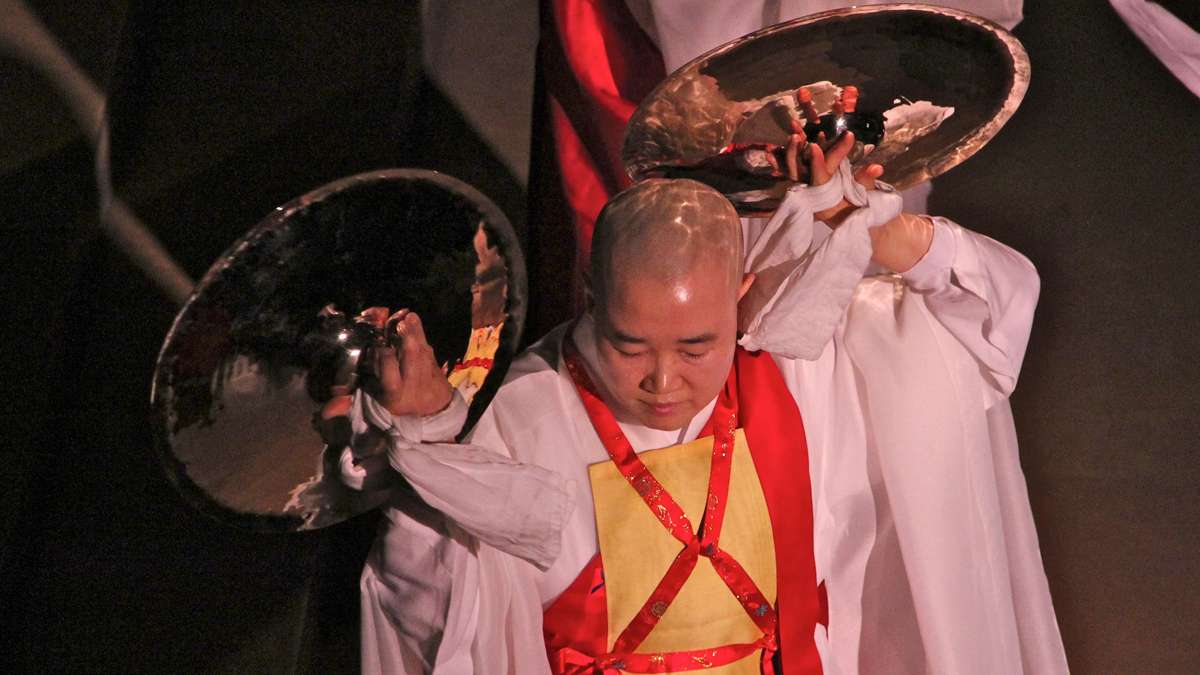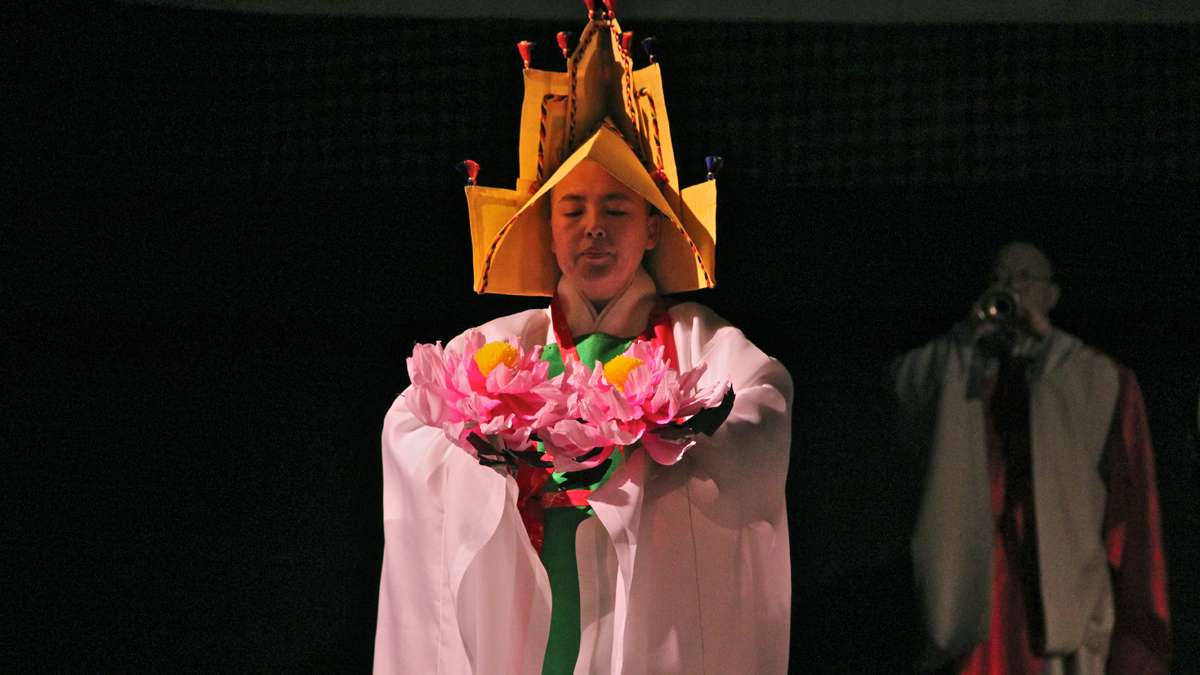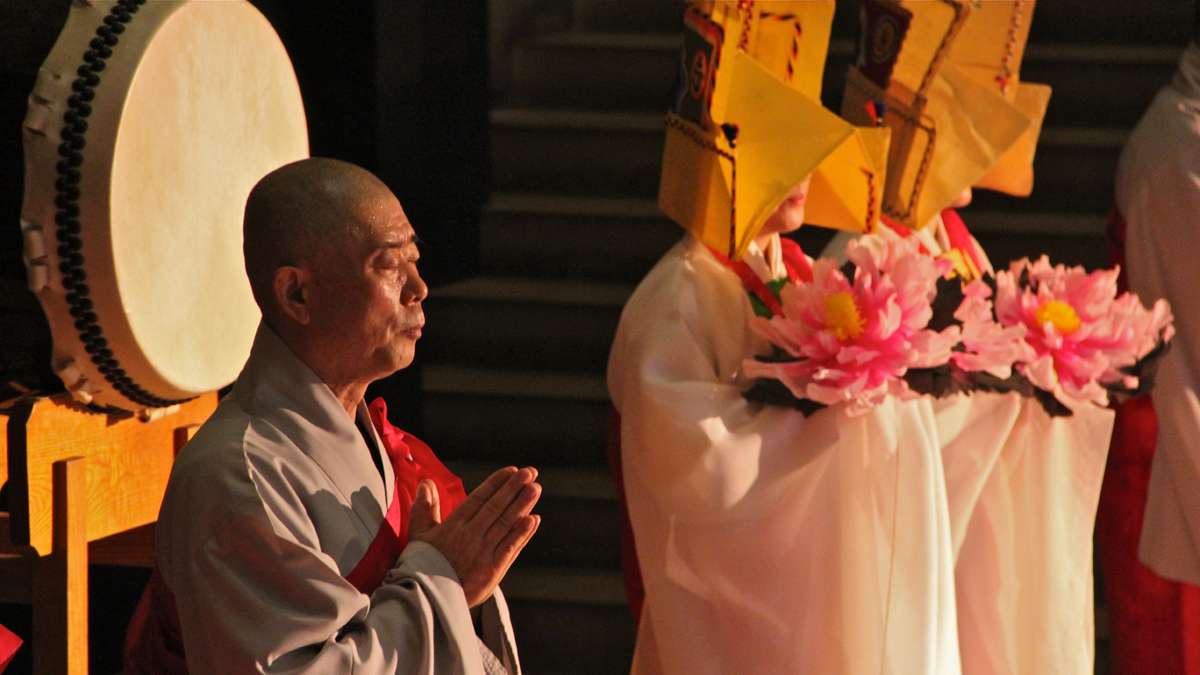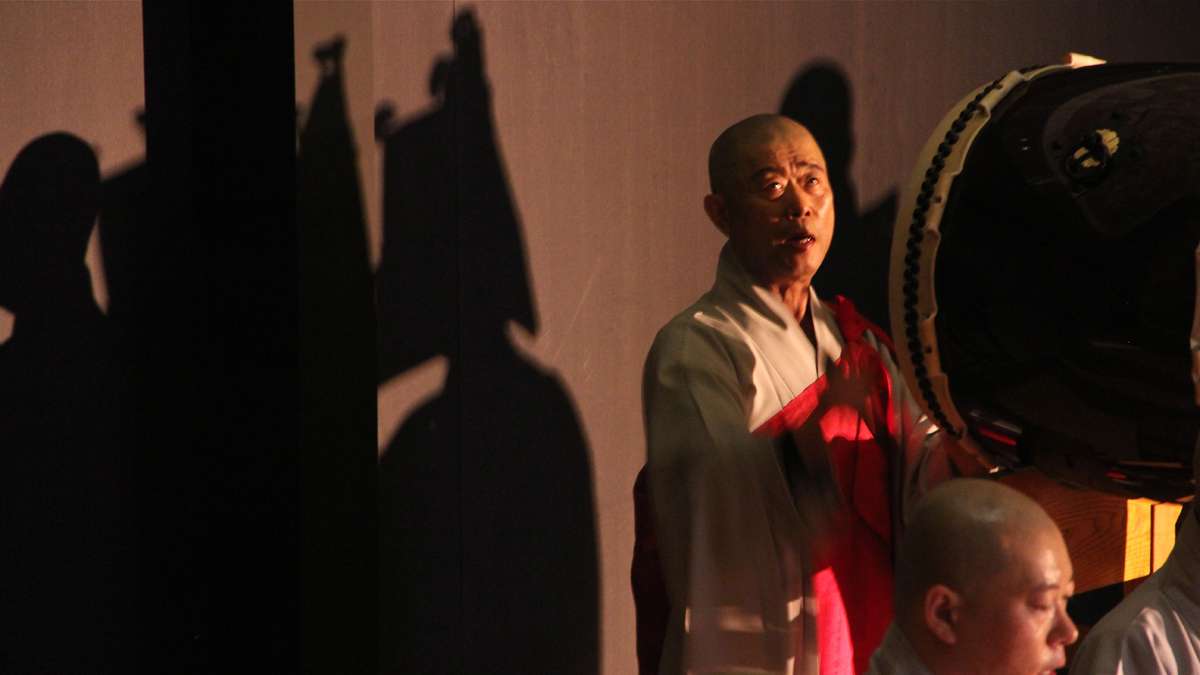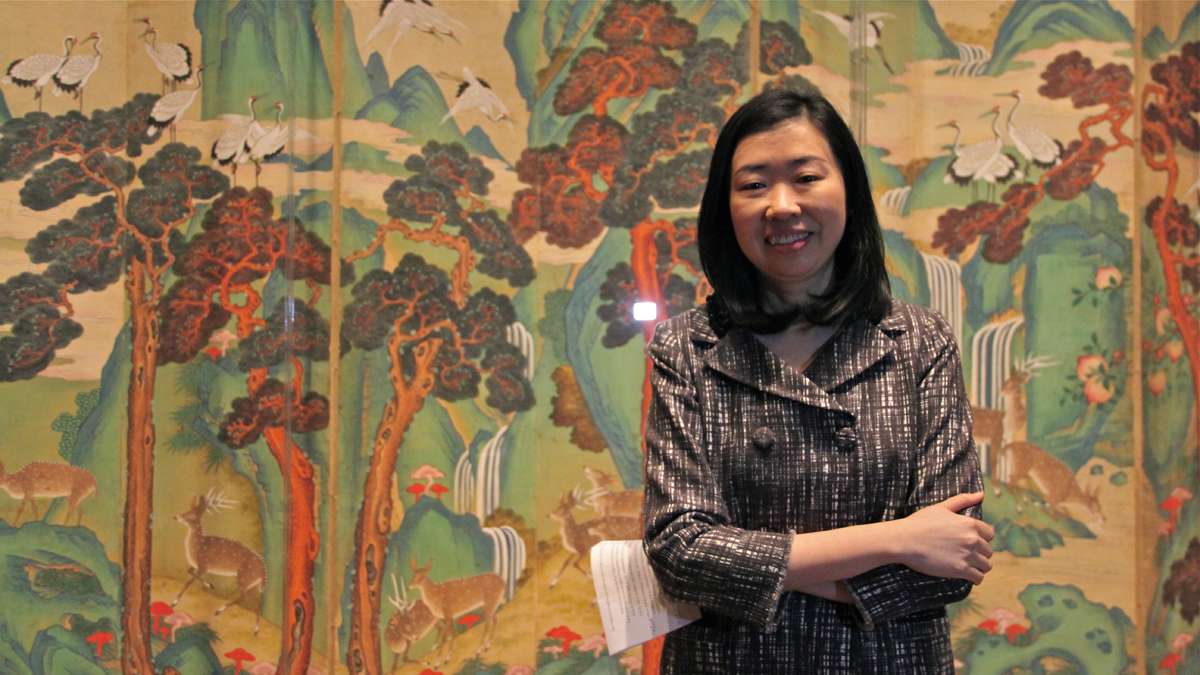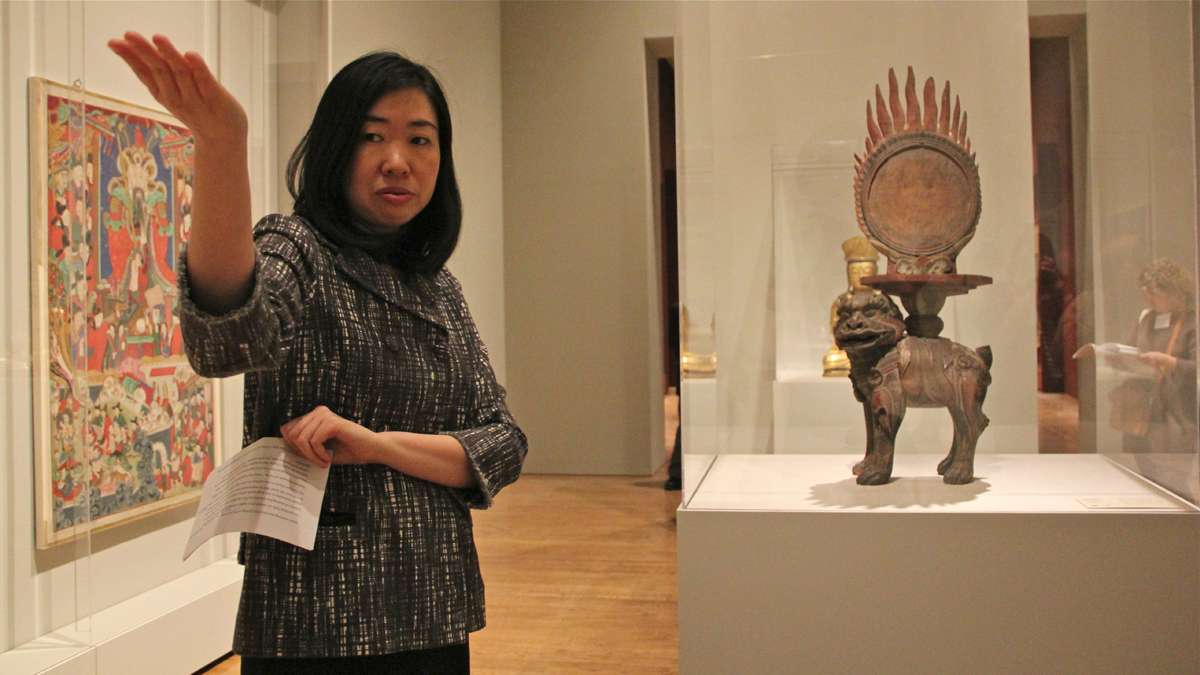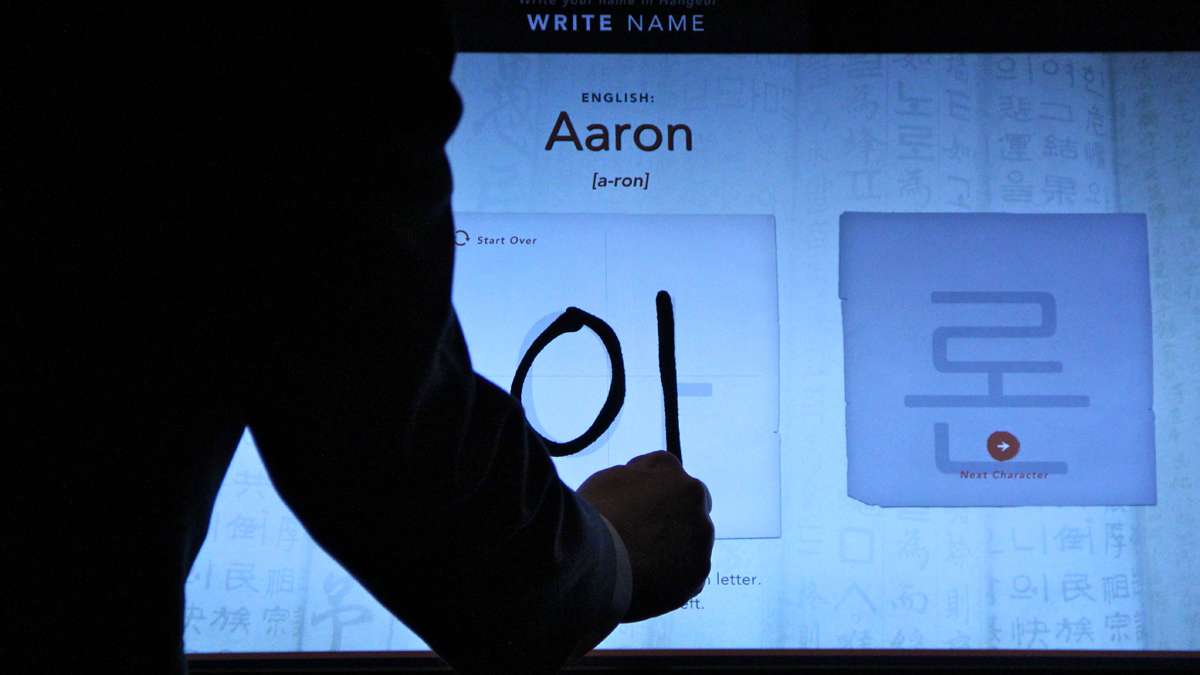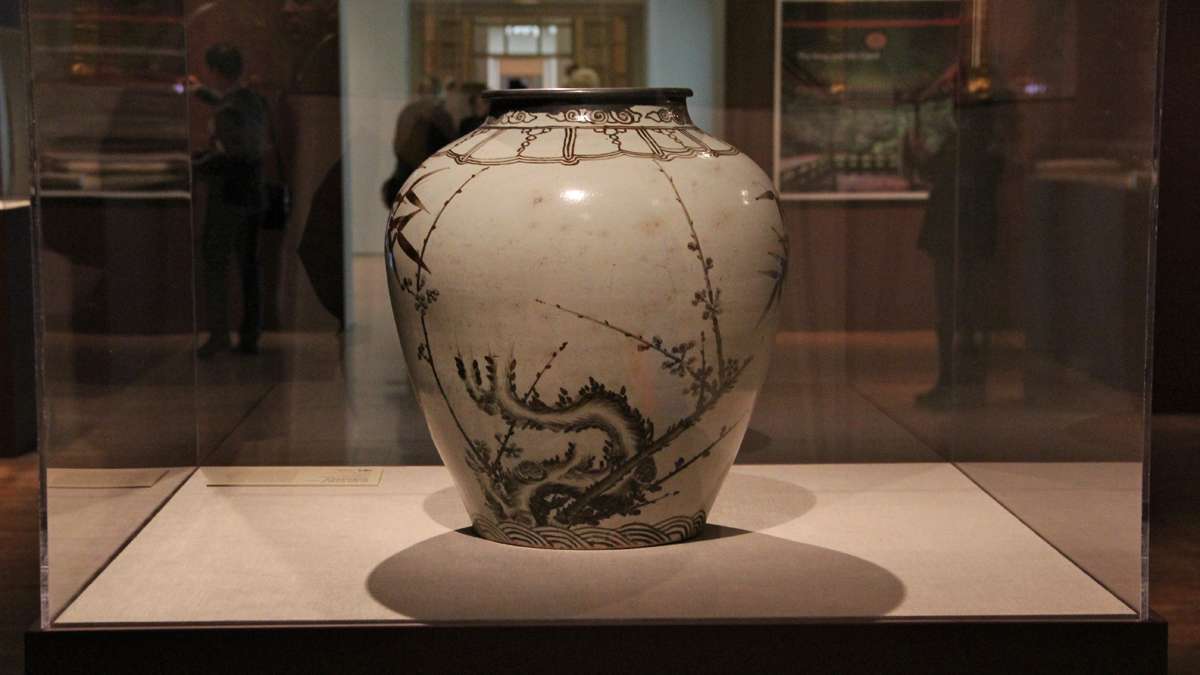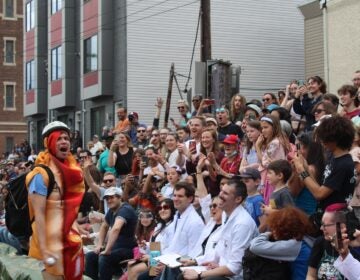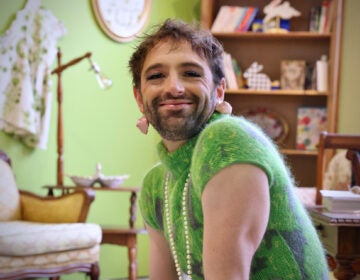Regal treasures of Korea arrayed at Philly Art Museum in first U.S. exhibit
ListenFor the last few years, the Philadelphia Museum of Art has been brokering a kind of art swap. Working with museums in Los Angeles and Houston, the Art Museum sent a traveling sampler of American art to Korea, called “Art Across America.”
Now, the National Museum of Korea is returning the favor.
“Treasures from Korea: Arts and Culture of the Joseon Dynasty” features 150 objects from one of Korea’s greatest dynasties, which ruled Korea for more than 500 years from the late 14th century to the early 20th.
The exhibition opened with a funeral.
Seven Korean monks performed the Yeongsanjae on the museum’s Grand Staircase. It is a sacred ritual meant to be performed on the 49th day after a person’s death.
“In the Buddhist belief, once you die, you have to meet the seven kings of hell in order to have your fate in your next life — whether you go to paradise, or reborn as as a human, an animal, a plant, a flower — depending on karma,” said Hyunsoo Woo, the museum’s curator of Korean art.
The longer it takes for the kings to decide what to do with you, the worse your afterlife gets. “If you have a verdict on the 49th day, you’re all set,” said Hyunsoo.
The Yeongsanjae was performed in front of an enormous painted banner of the Buddha, 40 feet high and 27 feet across, hanging at the top of the staircase (nudging out the goddess Diana for the run of the exhibition). The banner has never before been seen outside Korea.
Curiously, the Yeongsanjae is a Buddhist ceremony, whereas the official state religion of the Joseon (pronounced cho-sun) Dynasty was Confucianism.
The exhibition is full of artifacts mostly related to rituals and ceremonies, all of which are based on Confucian ideals. Buddhism was officially banned for 500 years, but it was already so well-established in Korea that no royal decree could shake it.
“People still went to temples, in many cases even the royals supported the temples — usually the women,” said Hyunsoo. “They commissioned Buddhist sculptures and paintings to wish long luck for the royals.”
Some of the most fascinating pieces in the exhibition are the royal protocols, a set of scrolls, books, and maps that document the activities of the ruling family. The marriage of King Yeongjo and Queen Jeongsun in the mid-18th century produced an elaborately detailed drawing of the wedding procession, with hundreds of individuals — each meticulously identified — drawn in the order in which they marched.
With the exception of ceramics and a few bound documents, most of the exhibition is drawn from the 19th century.
“Korea was invaded by Japan and China in the 16th and 17th centuries. That is when a lot of objects and buildings were destroyed completely,” said Hyunsoo. “It’s really hard to find early paintings, they would have been burned.”
“Treasures from Korea” will be at the Philadelphia Museum of Art until May 26, then continue onto the other “Art Across America” partners, first to Los Angeles County Museum of Art (LA has the largest Korean population in the United States) and then to the Museum of Fine Arts, Houston.
WHYY is your source for fact-based, in-depth journalism and information. As a nonprofit organization, we rely on financial support from readers like you. Please give today.



